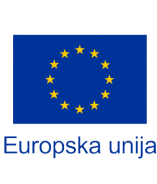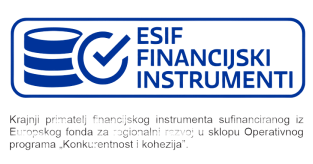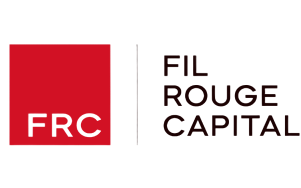

Why waste is the new raw material
Traditional leather depends on livestock, while most synthetics lean on fossil feedstocks. By pivoting to agricultural or industrial by products, next gen makers trim carbon footprints and divert biomass from landfill. The big idea, turn yesterday’s waste into tomorrow’s wardrobe with fewer emissions along the way.
Beer Skin, barley pulp reborn
Sabant’s own Beer Skin begins its life as spent grain, the wet barley left after breweries extract sugars. That fiber is cleaned, micronised, combined with a partly bio based polyurethane and pressed into smooth sheets, ready for bags and shoes. Independent third party LCA results are in progress.
Key takeaway, brewery waste delivers a soft touch and distinctive story without new cropland.
Piñatex, power from pineapple leaves
Pineapple plants shed tonnes of sharp leaves during fruit harvest. UK company Ananas Anam turns those fibers into a non woven web, adds a waterborne PU coating and finishes with heat embossing. Piñatex needs no extra water or pesticides because the leaves are an existing waste stream.
Key takeaway, Piñatex channels unused farm biomass into a breathable, cruelty free textile.
Desserto, Mexico’s cactus champion
Desserto grows nopal cactus on rain fed fields in Zacatecas, trims mature pads every six to eight months and blends the pulverised pulp with bio based polyurethane. Cactus requires no irrigation beyond natural rainfall and stores carbon in its extensive root system.
Key takeaway, cactus leather marries desert resilience with a soft hand and vibrant pigment uptake.
Mylo, mushroom mycelium magic
Bolt Threads cultivates mycelium, the root structure of fungi, on beds of sawdust and composted mulch. After ten days the web is harvested as a foam, tanned, compressed and finished with a plant based binder. Key partners include Stella McCartney and Adidas.
Key takeaway, fast grown mycelium delivers a low land use, low water option that feels close to suede.
AppleSkin, juice press by product
Northern Italy presses more than half a million tonnes of apples for juice every year. The leftover pomace is dried, milled and mixed with polyurethane to create AppleSkin, a material already featured in watch straps and small goods.
Key takeaway, food waste becomes fashion fabric while supporting farmers in the Alpine region.
Fruitleather, Rotterdam’s mango rescue
Dutch startup Fruitleather Rotterdam collects overripe mangoes rejected by supermarkets, cooks them into a paste, dries the sheets and coats them with plant based resin for strength. Recent pilots include slip on sneakers and small handbags.
Key takeaway, surplus fruit can skip the compost pile and land on the catwalk instead.
Cork leather, bark that grows back
Cork oaks regenerate bark every nine to twelve years. Stripped slabs are ground, mixed with a waterborne binder and rolled into thin cork composite. The result is lightweight, naturally water resistant and carbon negative according to industry groups.
Key takeaway, cork sheets prove that harvesting can be regenerative when trees stay in the soil.
Quick comparison table
Material | Primary feedstock | Binder type | Notable brands | Relative CO₂e vs cowhide* |
|---|---|---|---|---|
Beer Skin | Spent grain | Bio PU | Sabant | -70% |
Piñatex | Pineapple leaves | Waterborne PU | Marici, Hugo Boss | -55% |
Desserto | Cactus pads | Bio PU | Karl Lagerfeld, BMW | -60% |
Mylo | Mycelium | Plant based | Stella McCartney, Adidas | -65% |
AppleSkin | Apple pomace | PU | Oliver Co, H&M | -50% |
Fruitleather | Mango reject | Plant resin | Fruitleather pilot | -45% |
Cork | Cork bark | Waterborne adhesive | Watson Wolfe, Birkenstock | Carbon negative |
*Figures compiled from company LCAs where available. Not all LCAs undergo independent peer review.
Key takeaway, every option beats cowhide on emissions according to published numbers, though audit transparency varies.

Scaling hurdles on the road ahead
Consistency, agricultural waste streams vary seasonally.
Binder chemistry, most products still lean on some synthetic polymer for durability.
Price, small batch production keeps costs higher than mass market PU.
Certifications, clear standards for bio content and recyclability are still emerging.
Key takeaway, next gen leathers win on headline impact but still need scale, stable inputs and tighter standards.
Where each material shines
Beer Skin delivers a structured hand perfect for handbags.
Piñatex breathes well in warm climates making it great for sneakers.
Desserto accepts vibrant dyes suited to accessories.
Mylo feels plush against skin, ideal for luxury interiors.
AppleSkin balances firmness and printability for tech sleeves.
Fruitleather’s unique grain gives artisanal flair to small goods.
Cork remains unbeaten for ultra lightweight footwear.
Key takeaway, material matchmaking maximises both performance and sustainability.

Learn more on the Sabant blog
Our beer to bag lifecycle article shows spent grain transforming into ready to cut sheets step by step.
If you want to see Beer Skin in real products, explore the raw bag Beer Skin handbag collection for design inspiration.
For a wide lens on carbon maths, check impact of sustainable materials on the environment where we compare LCAs across textiles.
Future focused readers can browse future fashion trends sustainable materials to see how these leathers will shape next season’s runways.
Consumer attitudes are shifting fast, as we covered in consumers turning to sustainable alternatives, making now the perfect time to experiment with plant based hides.
How to choose the right plant based leather
Define performance needs, flex life and water resistance vary.
Verify bio content percentage, higher is better but durability must follow.
Ask for third party LCAs when available.
Look at end of life, can the sheet be recycled or composted.
Consider supply chain distance, local waste beats imported novelty.
Key takeaway, informed sourcing bridges the gap between good intentions and measurable impact.
FAQs
Are plant based leathers biodegradable? Many are not fully compostable because of the synthetic binder, check product specifics.
Do these materials smell like their feedstock? Finished sheets are neutral, Beer Skin will not remind you of last call.
Can they be repaired like animal leather? Heat patches and waterborne coatings allow spot fixes, though techniques differ.
Which is most durable? Mylo and Desserto currently publish the highest abrasion numbers, but testing protocols vary. Cross brand data comparability is limited.
Is price coming down? Costs drop as production scales, Piñatex reduced wholesale rates by 20 percent between 2022 and 2024.
Key takeaway, plant based leather tech is young but evolving fast, always check the latest specs.
Conclusion
Seven waste born leathers illustrate a vibrant shift from extraction to regeneration. Every square metre may save kilos of CO₂ and tonnes of biomass from landfill, yet transparency, binder chemistry and circular end of life remain areas to watch. Designers and consumers who choose wisely can speed the journey from prototype to mainstream.
Key takeaway, the future of fashion lies in feeding style with leftovers, not fresh resources.









.png&w=3840&q=75)







